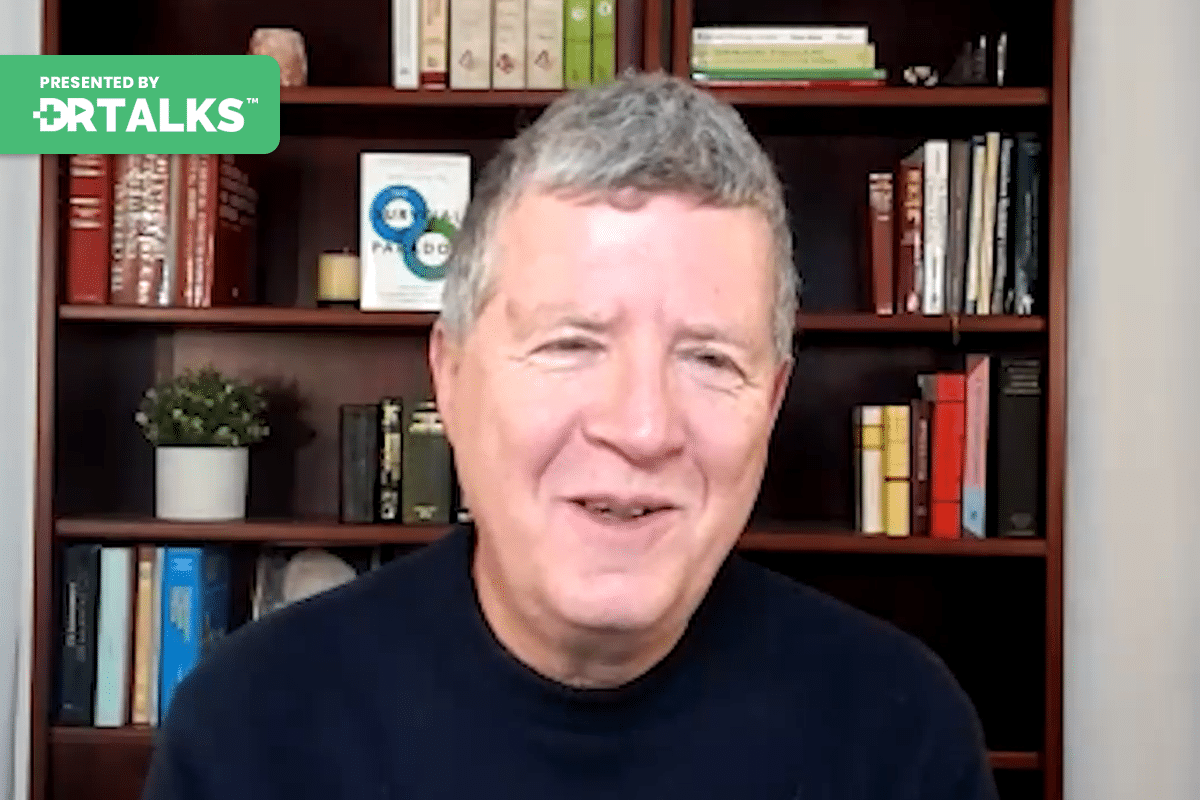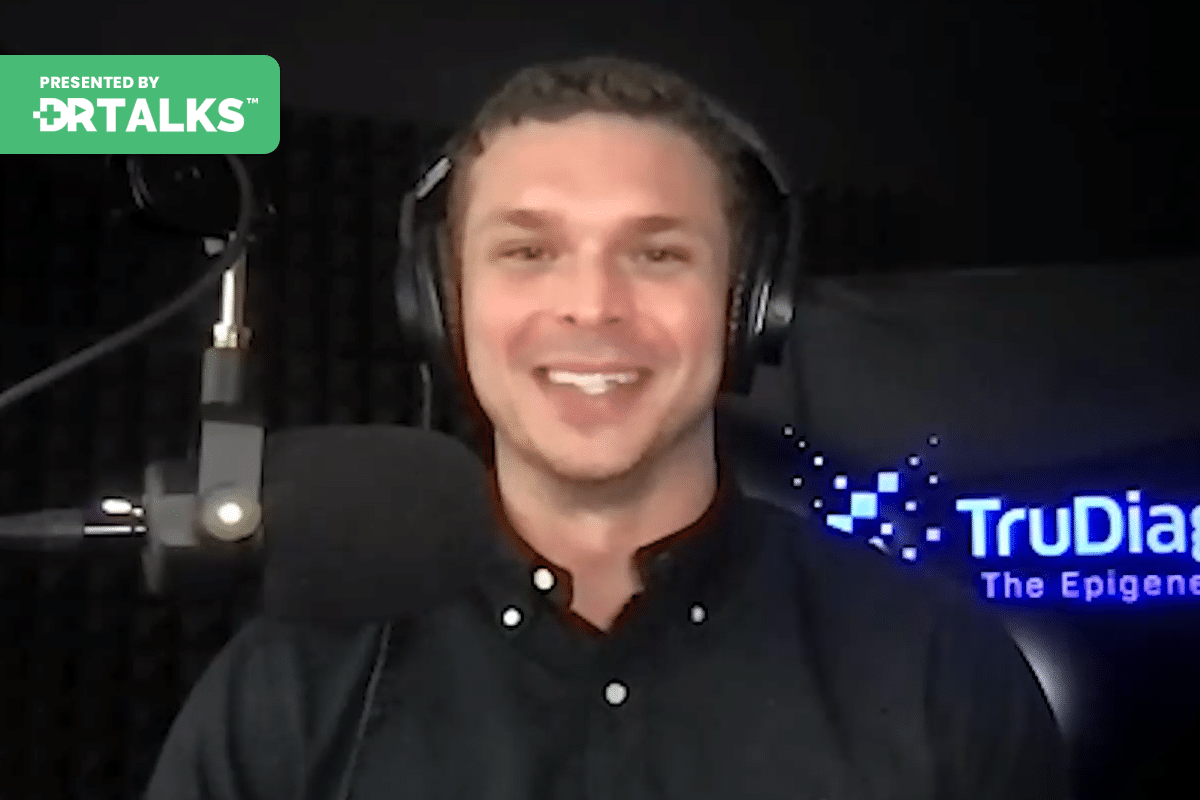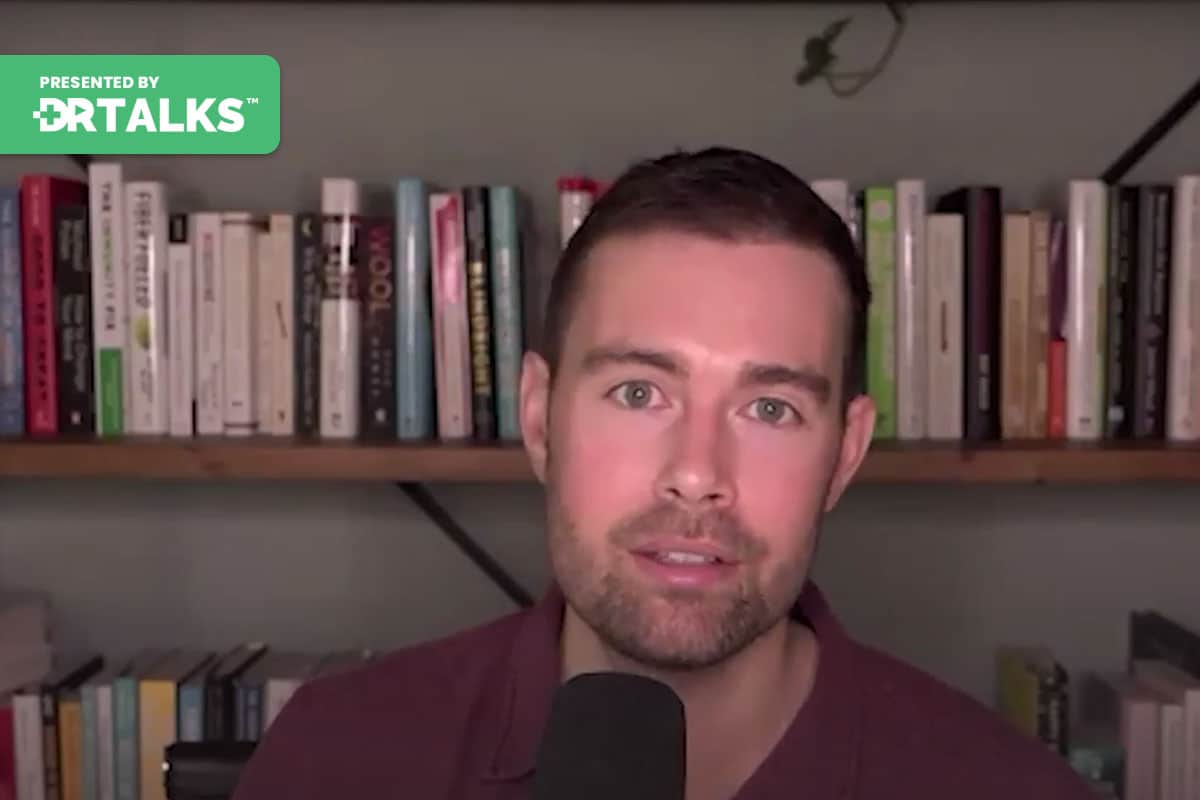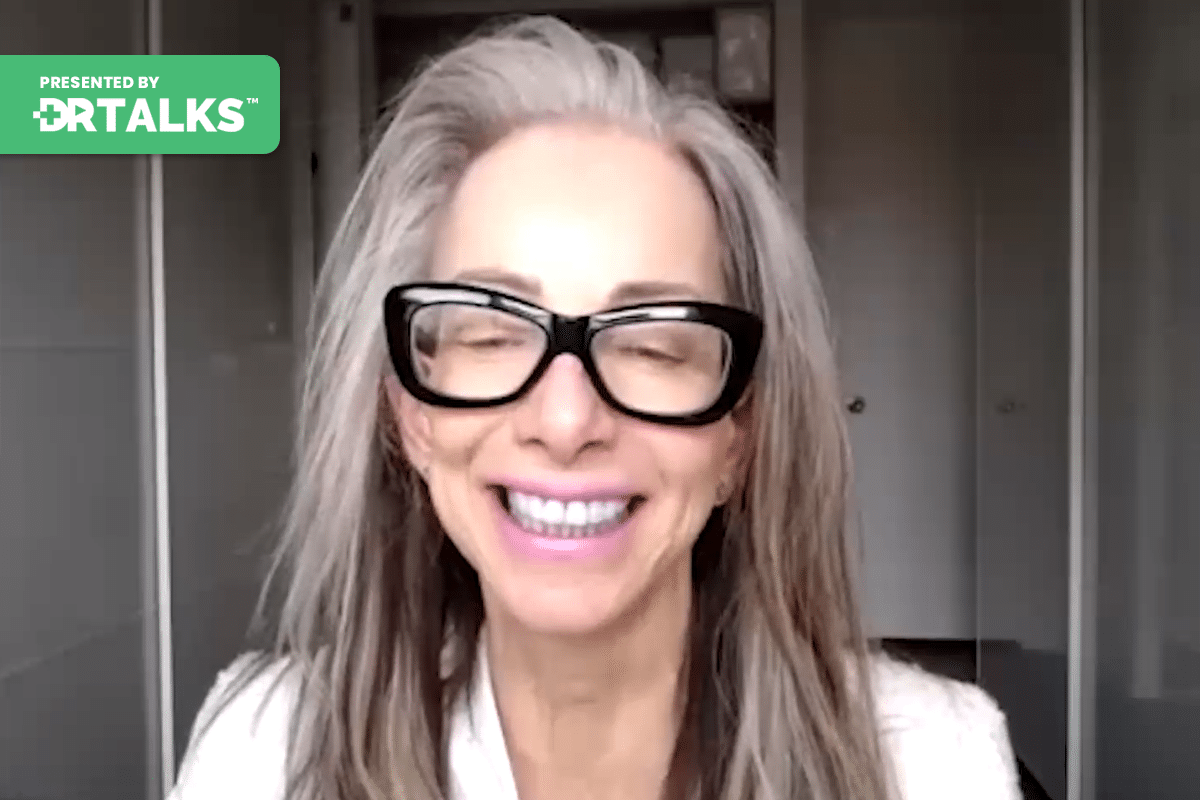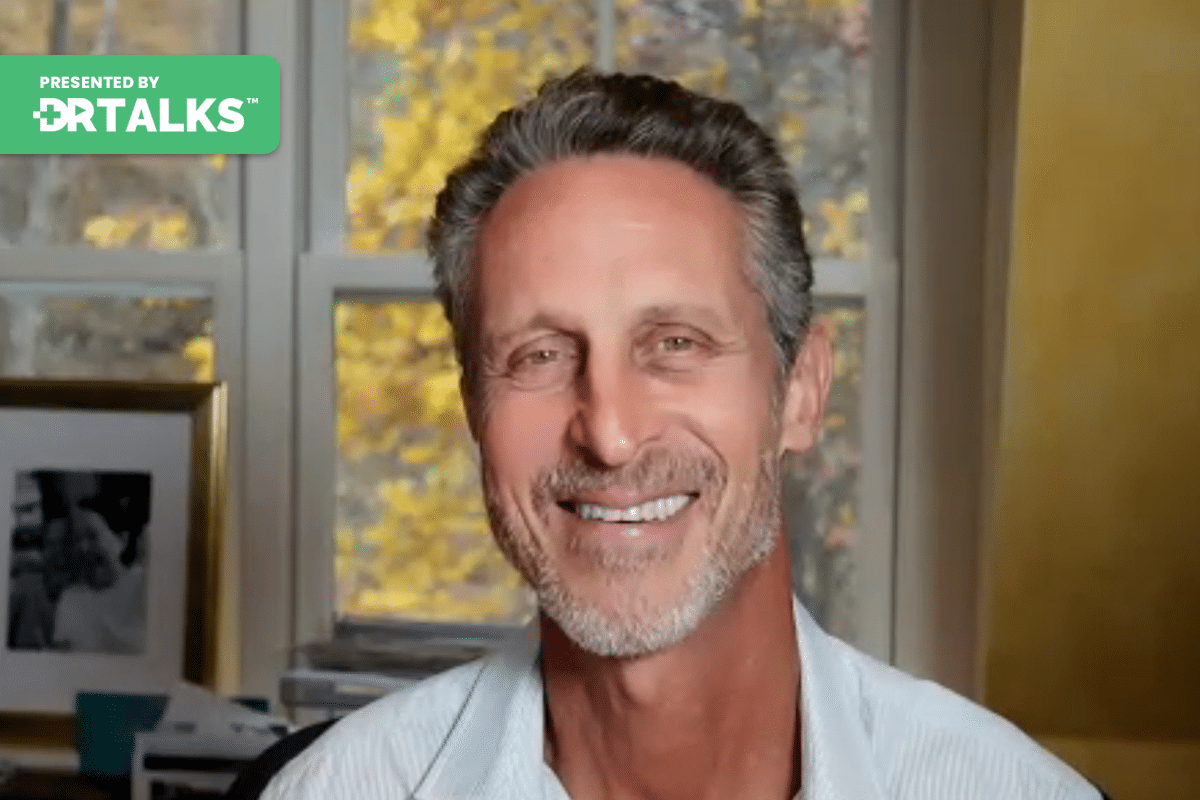Join the discussion below
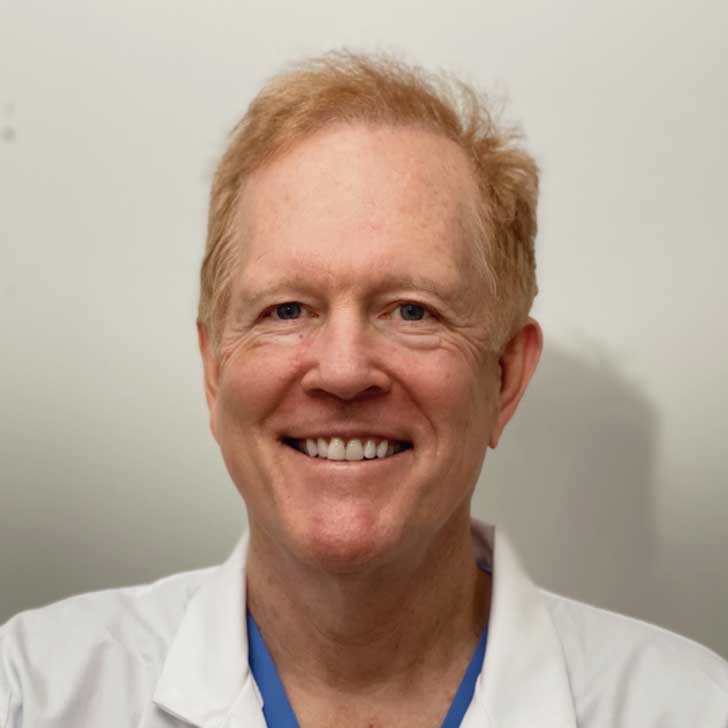
Robert is full Professor at a leading medical school and Chief of Neuroradiology at a large medical network in southern California. In addition to being a practicing physician, he is author of over 200 peer reviewed scientific papers, 32 book chapters and 13 books that are available in six languages. Read More
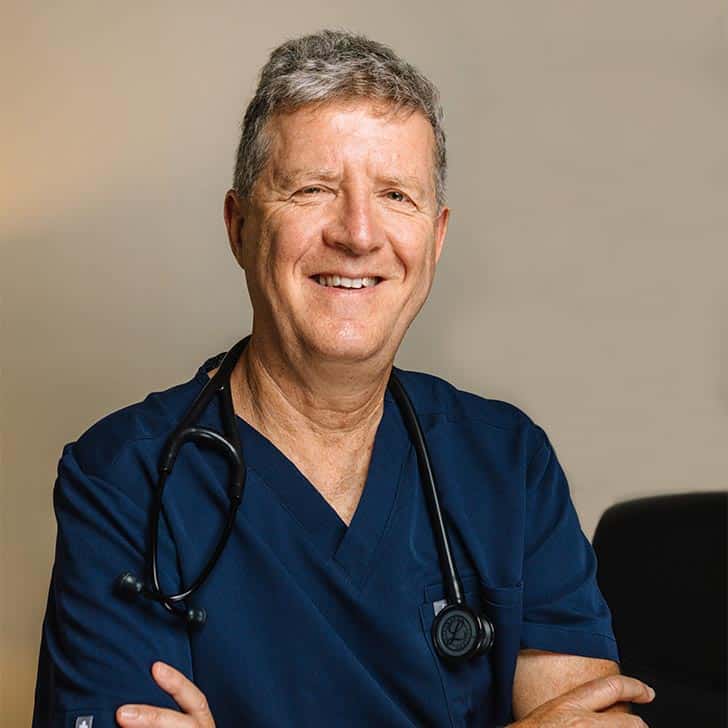
Isaac Eliaz, MD, MS, LAc has been a pioneer in the field of integrative medicine since the early 1980s, with a focus on cancer, immune health, detoxification and mind-body medicine. He is a respected formulator, clinician, researcher, author and educator, and a life-long student and practitioner of Buddhist meditation. With... Read More
- The survival paradox works via its protein, galectin-3
- How galectin-3 fuels inflammation, fibrosis, and inflammaging
- How to address inflammaging upstream at the source
Related Topics
Aging, Alternative Medicine, Chronic Illness, Galectin-3, Inflammaging, Inflammation, Longevity, MindsetRobert Lufkin, MD
Hi, welcome back to another episode of the Reverse Inflammaging Summit. And I’m your host, Dr. Robert Lufkin. Today we’re going to talk about a fascinating concept, the survival paradox and, and, and how it applies to longevity. And I’m thrilled to be joined today by our expert Dr. Isaac Eliaz who has written extensively about the Survival paradox and is an expert in this field. Hi, Isaac, welcome to the episode.
Isaac Eliaz, MD, MS, LAc
Thank you. Thank you so much Robert for having me inflammaging, you know, is in the root and the driver of chronic disease of inappropriate aging. And so I think now it’s, it’s finally getting the attention it needs to get and it’s really something we can do something about it. That’s so exciting, you know.
Robert Lufkin, MD
Yeah, I can’t wait to get into this. Before you do, maybe you could tell our audience a little bit about your background and how you came to be interested in this fascinating area.
Isaac Eliaz, MD, MS, LAc
Yeah. So I’m, I’m a native of Israel in my early sixties. I’m a medical doctor. I mean, from secular medical school in Israel, but I started my journey in holistic approaches at the age 15 when I lived in Korea, doing Taekwondo and meditation and yoga. So almost 50 years. So in parallel to getting trained in Western medicine, I got trained in yoga. I was a yoga teacher. I learned a lot. So I learned Chinese medicine and master of science in Chinese medicine and a licensed acupuncturist. And my focus in integrative medicine was oncology and how to cure in an SS. And at the same time, I got deeply into meditation into Tibetan Buddhism. And I spent about 20 years every year, 2 to 3 months in the mountains and for 10 years if they retreat, if they working. And so I was fortunate to be the doctor and student of the greatest meditation Masters in Malaya on one for many years. So I learned a lot of different esoteric meditation practices. I’ve seen a lot of things that science cannot explain and all of this really connected back to something very simple for me. If we can connect our heart, our heart is infinite healing potential. And what prevents us from connecting to what is in us already is our survival response, which is innate within us. So that’s the depths of the Survivor paradox. So it’s really, it’s a, it’s a coined this term to express our life.
You know, we all want to survive and, but there is a cost to it and the most direct result of this inappropriate survival response, which is necessary, the survival response is inflammation. So that’s a little bit about my background. So I’m an active clinician. I’m a healer. I’m a researcher. I have large NIH grants where I researched the removal of the survival paradox protein collecting three through therapeutical phrases in sepsis actually. And in kidney injury, we are, we are getting close to clinical trials, hopefully. And so I got to one head just, just like you, you know, academia and pub published papers and on the other. And I’m out there in the stratosphere all with my, with my experience and my understanding and I try to integrate it. And hopefully over time, I’m doing a better job in explaining it. You know,
Robert Lufkin, MD
I love the background, what a fascinating journey you’ve been on. And it’s, it’s interesting to me that some of the most creative innovative ideas in this space are, are coming from people not so much in, you know, mainstream medicine or, or the science community, but those who have bridged both of those and embrace things like meditation or other alternative approaches. And that’s where some of the real creativity comes. It’s so great to see that.
Isaac Eliaz, MD, MS, LAc
Yeah, you know, it’s interesting and because on one hand, my part in the medical device world and, and you know, in Age grant, this is not an easy thing to get, you know, like a multi million dollar in age grant, you deal with the heads of departments in Harvard and Stanford, you know, and you, and you have to, and some of them were really, really at the top, they allow their creativity to come out, you know, they’ve made it so they don’t have to, they don’t have to adhere to, to the box, you know. And so, no. So the reaction is, wow. Oh my God. If this works, it’s like it will change medicine. So it’s an interesting process and we can talk just about this. But in many levels, science is amazing. But for me, science is more confirm a confirmatory tool. I get my ideas from insights from meditation, from contemplation, from clinical observation when I was a one on one and then science and research become a tool to confirm it and to refine it and the small details of science and regulatory quality are critical. Many people, you know, again, I’m talking to you because of your big one. I never actually talked about it in the summit. But people you know, in the alternative field, they want to do this treatment and the treatment. And I have to admit a lot of the popular even cutting edge treatments started in my clinic 20 years ago. Now my life is simplified. I’ve been there, the in depth proof and the in depth assurance of safety, it’s very important. And only until you start doing it and being in it and see why you have to make sure there’s no side effect and no reaction and all this. And you say, oh my God, I got an amazing invention can save millions of people. It’s gonna take me so much money in years because I have to prove safety. But there’s value to it, you know, so it’s value to it. So it’s part of the integration that is not often talked about is taking the ideas and seeing how we can work with the system to make them available.
Robert Lufkin, MD
Yeah, that’s really a unique perspective that you bring to this space. And before we dive into some of these ideas, maybe just take a moment and tell us in our audience, how you view longevity and aging. In other words, why do we age? What is longevity? What’s your, what’s your kind of intellectual framework for that?
Isaac Eliaz, MD, MS, LAc
So longevity in principle has two qualities to it. It has a quantitative quality, how long we live? It has a conventional qualitative quality, conventional, which probably is what all your speakers are speaking about, which is the quality of our life. And it has a more esoteric qualitative quality about how many different things we do in life. So in Chinese medicine, longevity is measured by how many different things we have done in life. And from Chinese medicine, if somebody lived 100 years and they’ve done one simple thing, they haven’t evolved, they lived a very short life and a great example. I often give his Mozart who died at the age 32 and left the longevity of work that is still with us. So he had an amazing longevity of the person. Really is the theory, the whole theory in the person who revived Kabbalah In, in Israel, I think 17th, 18th century, he came from Egypt at the 831. He lived one year and he died and there’s a whole movement, you know, all over the world. So longevity is also how many different things and from the perspective of simplifying it is how many different ideas we can hold.
And the more ideas we can hold and shift between means we have more flexibility. And when we have more flexibility, our, our tourism are flexible, our blood flow is more flexible. There’s less resistance, less fibrosis, there is less inflammation and it’s like a rubber band that can stretch and let go. And there’s a resilience. There’s a resilience, not of just hitting the wall, but of looking for another door. And that’s really the, again, I’m a little bit of track, but it’s interesting. I often say there’s always a choice, even somebody on their deathbed, they have a choice of how they are going to die. And it’s gonna have an impact on their summarizing experience of life, on their transition and on their community around them. You know, people can leave this world and leave a gift to the people behind them or make it very traumatic. So we always have a choice and the the body will always do its best to survive. And our role is people are trying to give some guidance in inflammation and longevity is to show ourselves and show others that there are different options. And in order to show that there are different options, we have to understand it because everything is changeable science, everything is impermanent, nothing is permanent basic quantum mechanics, then everything is possible. And that’s really the driving force of longevity. So the more we are flexible, the less we are stuck, the less we are inflamed, the less we are fi brought IQ the longer we live. So if we look at the level of collecting three, the survival paradox protein, that’s how iconic centenarians, Robert, have a lower level than people in the seventies and eighties in public studies. And when you look at the study, it’s really nice. You see seventies, eighties and you know it’s spread. And at the bottom, you see this whole layer of lower level of collecting three, these are the people that are going to make it interesting terry in. So you see the same proteins that drives inflammation that drives fibrosis, that drive fight that doesn’t allow for flexibility and flow. You can see. So I’m taking it back into science. So that’s what I mean, the connection.
Robert Lufkin, MD
Yeah, definitely. I want to talk about collected three and your work in that area. But before we do, let’s step back a little bit. And you mentioned the drive to survive. Could you expand on that a little bit and how that leads into this survival paradox?
Isaac Eliaz, MD, MS, LAc
Absolutely. So, we are wired to survive innately from beginning less time. We, it’s within us and we’re always doing the best weekend to survive. So, because it’s built in us in every cell in our body, it’s automated. It’s not something we think about and it happens in a fraction of a second through the autonomic nervous system, through the sympathetic nervous system. And the two basic drives of survival is fighting which equates to friction into inflammation and running away, which equates more to hiding, to getting away from danger, which creates the isolating quality, the microbes, the biofilm, the micro environment, the place where we can hide, we can hide traumas can hide multi generational traumas can hide, bacteria can hide, viruses can hide. We get a micro environment, we get a change in metabolism. It’s a great environment for cancer right to grow where there’s an environment of his survival, a survival environment. We need energy very fast. We use glucose faster. We get a high SUV in a pet skin, right? Because we’re consuming a lot of glucose. So, this is the immediate sympathetic response that we can balance with the power sympathetic response with taking a deep breath with creating spaciousness with changing our lifestyle. And that’s the power that we each have. But then there’s a biochemical response and the issue of the biochemical response that once it starts, it triggers a cascade of events. And even if you stop the instigating upstream protein, you have gotten now a downstream effect of cytokines and inflammation and fibrosis thick factors. And we all became acquainted to it with the COVID and COVID long haul and cytokine storm, which is really what killed people in COVID. And so when we address the Survivor paradox, in many levels, on a on a biochemical level, by blocking the protein collecting three with modified citrus pectin, respect us all by creating different methods that will change the environment of inflammation by doing lifestyle changes and by all, by changing our mind, the way we think about things, the way we feel things, it will have a profound downstream effect.
And it’s really you either creating inflammation or you don’t create an inflammation is not something we can escape because every time we repair, we leave a tiny scar. So the idea of combating inflammation in inflammation is to try to heal without the skull. And if the and what is regenerative medicine, you know, regenerative medicine, longevity addressing, which is the basis is addressing inflammaging. It’s not that we have to read to generate a new cell and its impossible, we just have to try to get ourselves to go back to its normal function. If we get a cell is functioning abnormally to go back to normal mitochondrial function, to have a good relationship with its neighbors and change the receptors on the membranes.
For the macrophage outside to become, to feel more safe and not to produce inflammation and become like, you know, M one M two inflammatory macrophage excrete collecting three where the cell can more easily. Insulin receptors work better. M P K work with better PDK is inactivated. Pirouette comes into the mitochondria, that’s regeneration, you know, that’s a different person, right? And that’s why in the field of cancer from a from a basic philosophical perspective, we try to attack but we also try to re differentiate the law. It’s an ancient concept. What can we do to make the cell more normal, less aggressive.
And so it’s, you know, so it’s there, as you can see, as I mentioned a little bit, there is clear, detailed accurate biochemistry and just give some simple example. And there is also this understanding, how can we make a cell go back to fill it? It’s a part of a community that it has a certain lifespan and then it just ends its life and another cell will come in normal apoptosis, normal energy production, which is very efficient but much slower. It’s more of a time of safety where no rush to produce energy, but we can produce 18-80 ps from one glucose is, you know, so well and without any byproduct lactic acid or we are in stress, we’re in danger. We produce energy 100 times faster. But at a very heavy cost, the cell feels like it doesn’t have oxygen approx inducing factor goes up. It becomes a mess we age. So that’s a little bit deeper into the survival paradox, inappropriate survival response and what it does and the understanding that we have the power to change.
Robert Lufkin, MD
Yeah, some of what you mentioned about returning to that the, the better state. It sort of reminds, reminds me a little of the partial epigenetic reprogramming work that’s getting so much publicity with Yamanaka factors and that the, so some of this is mediated in the Epp egy gnome, you think with methylation and other things as well, then you, you mentioned a MP kinase, which is one of the master signaling proteins. We’ve talked about M tour on this program, which is another master signaling protein that switches back and forth is to review for our guests that between food abundance and glucose utilization essentially. And inflammation which it drives because the food’s coming in and it’s foreign material versus survival. Let’s not say survival, let’s say sort of starvation mode or fasting mode repair mode. When Tata Fiji’s activated inflammations turned down, which people will achieve with fasting and ketosis, I guess Is the survival paradox is that, does that have any analogies to M2 or the the activation or turning off of em tour because Mturk has been cited as a longevity drug and rapid mice as a longevity target for rapid mice and, and fasting and ketosis. And all. Does that fit in with the survival paradox.
Isaac Eliaz, MD, MS, LAc
First of all, the survival products is about life. So everything fits in the survival products. Everything I’m smiling because I killed somebody from prostate cancer in 2005, using em to one, you know, using Metformin and other stuff. And the medical board in California came after me, you know, somebody and they were already 100 and 60 studies, you know, eventually. But I’m smiling because I’ve been doing it for 20 years. So, yeah, definitely. So we have to understand the M to one a.m. P K is a metabolic expression of safety in danger. So, there are things that regulate em to one, you know. So Metformin is a drug burr bearing a little bit procuring. The most important one is monarchial, which is under used binoculars.
The most powerful because inoculation effect on em to one blocking it, it stimulates A M P K, it blocks a Katie, it blocks H I F all of these, you know, if we had a diagram here which I often show will our pathways that activate PDK, the enzyme that stops the normal metabolism and it also blocks and, and, and, and, and, and Kappa beta and the NFL phone on a long term basis. So you are very important. But what starts it is a reaction on the membrane. What started is insulin receptors being blocked. It’s the idea that, you know, something is wrong. We can’t get our, we’re not getting our nourishment and on a deeper level, the cellular feeling that it cannot take a deep breath. That’s really what happens. It’s, you know, often when I work with the cancer patient, I will ask, I will go to the cancer area and I will ask the patient towards or just connect with what made you or the cancer, the tissue not be able to take a deep breath. Because the moment we take a deep breath cellular early, this whole mechanism because A J F goes down to one gets shut down, you know, MPK goes up and we’re in good shape. So, yes, absolutely. And that’s one of the most exciting areas to really that we’re making contribution and fasting is very interesting because when we have scarcity, when we are in a survival mode, there are two kinds of survival mode. There is a classical survival mode which is very short term. We have to survive the next 30 seconds. Next five seconds, somebody’s shooting at us, we got to run away, we got to produce energy. It doesn’t matter if we get hurt if we get cut, if we know if we pay a price for another 50 years we got to survive. That’s the classical, that’s a traumatic survival response.
And in this sense, when it’s deeply registered in us, it creates cars in our DNA. That’s epigenetic component, which we know so well, holocaust, you know, and I tell my story how I had Very intense chest pain right here for 50 years and upper back pain that I knew was not mine. I named after my grandfather from who was Isaac that I never met and only at the deathbed of my grandmother. I write it in my book, 50 years after he died at the age 50 from stomach. And so he couldn’t stomach what happened. My mother just tells all of us five siblings that 10 of the two way of his 12 siblings were killed by Hitler. Nobody told us. So he held the trauma, nobody talked and it was passed to me. And when I healed from it, when I went through a sense of forgiveness, my pain went away immediately after 50 years. I have no more pain.
But my mother in her 80s who could never watch anything about the Holocaust was able to start watching programs about the holocaust without knowing what happened to me. So that’s the multigenerational. So for the viewers, for the listener, when we address inflammation, there is a multi generational effect, there is an effect on the people around us at the present time, backward and forward. So that’s the importance of the topics that we are addressing. So when we look now going back to fasting, so we talked about the survival fasting and I want to elaborate on it because ketogenic diet is a tricky one.
And I went, you know, on a limb in 2 10. When the first big studies came on the ketogenic diet in cancer, I was teaching in a four a.m. at the integrative Oncology Program. And I said it’s gonna be overused because of ketogenic diet was the ideal diet for longevity. The body would have done it anyway. It would have been our choice, right? And it’s not. But autumn fa jee and intermittent fasting is where we shift to a longevity survival. Well, now our survival is long term. It’s how can we live longer and that’s what happened in starvation. How can we manage longer without food? Right. So when you start tapping into a tautology, you start tapping into survival mechanisms that are very beneficial for inflammation. And that’s why in my opinion, intermittent fasting is so critical. It’s probably the most important dietary advice and the exceptions. Of course, certain people when certain mechanism, but it’s key and ketogenic diet has its role at very specific times when we want to really shut down certain pathways. For example, cancer during radiation therapy or during chemotherapy, or we want to create the body really needs a time to take a break, to take a deep breath. We want to shut down glucose metabolism completely for a few days and let the body recapture itself. But in this sense, auto fa jee, intermittent fasting and agents that can help it. And dietary advice are the simplest and most important key factors in addressing inflammation and the hardest because it requires a lot of discipline for each person. Right.
Robert Lufkin, MD
So, let me underscore a couple of things you said there. So the chronic survival response with fasting or with some of these other things that turns em ter down and turns down inflammation turns up atop a gee, that’s obviously the beneficial survival response that we’re looking for.
Isaac Eliaz, MD, MS, LAc
Totally. And it’s not part of the survival. The paradox is the immediate survival because really what’s innate in us is the immediate survival response is not innate in us. If it was, we would all be doing it right. It’s a strategy. Now, we are strategic, right? 12 hours, 14 hours, 16 hours, 18 hours, 20 or 20 for, to the, we are strategic. But yes. And then so people kind of lump them together and the lamp dietary approaches together. I know. And the beauty of tautology, it bridges the beauty of intermittent fasting it bridges day to day functioning with long term functioning. It’s right there right at the 16 to 24 hours to 14.
Doesn’t matter. I’m sure a lot of people went into details. I don’t want to take the time, but that’s, and so lately I’ve, as people are asking have been trying to point out that there are different, different movement in these different approaches and each person has to, of course, match them to their capacity. You know, people who have great antioxidant capacity can push more oxidative stress. People are not able, don’t have a good antioxidant capacity cannot push oxidative stress. And it’s not only biochemical, it’s also emotional, it also psychologically, it’s also mentally. So it’s, that’s why life is so amazing, you know.
Robert Lufkin, MD
Well, now I want to talk about galactic three. But before, before we do, I want to just underscore one last thing from before that you said that I think was really important was that we affect people. Not only you said we affect the people around us and all, it’s not in our intergenerational things in our family, but also other people. And it’s not to be clear if I understood you correctly, it’s not just through epigenetic sex, but also through psychological factors and human interactions with them that we affect people. It’s not all directly. Biochemist, biochemist.
Isaac Eliaz, MD, MS, LAc
Absolutely. Absolutely. And actually, it’s our electromagnetic field from the heart is bigger than our body. So what we feel in our heart if we are more reactive ego driven struggle, but if you’re more responsive and the heart is, I don’t know if we’ll have time to talk about it. But they talked about a lot. The heart is built different than any other organ to do this job. This field not only touches every cell in our body, talking about inflammation, but it touches people around us. But in this sense, we have the choice if a gene will be turned on or turned off, right? You already mentioned it and you know, it’s a very beautiful thing in Hebrew very ancient saying, saying a cult of which means everything is predetermined the genetics.
But we have the choice and it’s actually so ancient. They knew this and the choice is the EPA genetics and the beauty about it is a multigenerational effects. So really when we do this now, why am I mentioning it? Because if we are taking care of our health and again, I don’t know, I mean, I’m going a little bit esoteric. I apologize if we go. If we focus on our health on addressing inflammation from a very selfish. Just for me, there is a contracting focused effect and this contraction by itself is counterproductive. When we open our heart and understand that we all want to reduce inflammation.
The world sure needs right now less inflammation. But I can see in society in strife and struggle, what is global warming? It’s inflammation on a global scale out of our body. When we can address it, we have more space to let the heat, the inflammation causes heat right. The heat to dissipate. We get more support from other people. When somebody’s down, we are there to hold them and we are down. Somebody’s health, somebody’s there to hold us. Of course, when we have friends and family, it’s obvious it’s more but energetically, That’s how it works. Robert, we have almost 50 trillion cells in our body.
We work as one, One system, it sells close to one million million reactions. A second people are not aware of it. If this is not a miracle that we can talk right now, what is a miracle? You know, how is it happening? There is support, there is a system and who nourishes the system and takes all the complaints from the system all the time. Our heart, our heart gets all the dirty blood from every cell in the body, right? What we don’t want oh no. Take it away. Connect with the universe. That’s an infinite community, infinite space and gives nourishment. And then our job and what we are talking here, one is to realize and connect with the heart. That’s we’re not talking about this so much today, but ourselves have to be willing to take nourishment. See it’s many times, you know, it’s like, yeah, we can give nourishment through the heart. But if the cell is blocked, if the cell is micro environment, if collecting three protein creates a lattice formation and the nourishment can come, we have high lipoprotein or we have every metals or we have toxins or if the cell is traumatized and contracted. Mm, 21 is activated. The cell is not taking the nourishment and the classical is the Warburg effect, right? The Warburg effect, you have oxygen and the cell still goes into IRO bic psychologists. If the cell could just open itself to nourishment, the cancer will dissipate in a fraction, there will be no cancer, the cell becomes normal. So we talk about biochemistry, but there’s a bigger picture in it because we are dealing with inflammaging on a global scale.
Robert Lufkin, MD
Yeah. Great analogy of climate change is inflammation for the planet. But the point you brought about the heart was, was beautiful. It’s I hadn’t thought of that before. The heart as an organ, not just for pumping blood and that but as electrical psychological organ beyond that. That was beautiful.
Isaac Eliaz, MD, MS, LAc
Yeah, I talk a lot. It’s really my main work. That’s supposed to be the first work. It’s hopefully it’s written about it’s called open heart medicine because once, because the heart is the only organ in the body that takes dirty blood and gives you clean blood. No other organ does it. You know, I mean, the kidneys in some ways, but it’s different. It’s still arterial blood. So, it’s different and it’s connected to the heart and the heart is the only organ that nourishes itself through the coronary artery after it finishes its job, the blood is clean, it gives it without discrimination, the water is stiff, artery gives it and then it relaxes the coronary arteries open up outside of the heart of people don’t know in the aorta and it gets nourished.
So the out survival is to nourish selflessly. And the moment physiologically it stops in 60 seconds, we are dead. So, of course, the mental aspect, psychological, the emotional, spiritual, a part of it. And the reason why it’s easy to connect, easier to connect to it than to change our mind. Habit of not being caught in thoughts is because it’s happening anyway, physiologically. And as long as there is flow, as long as there’s good oxygenation, then everything you mentioned as drivers of inflammation goes away because M P K is jumping up and down, you know, it’s getting plenty of oxygen and nourishment and everything is cleaned up and there is no lactic acid and as he does this and all is good, you know, paradise.
Robert Lufkin, MD
That’s a beautiful, beautiful, beautiful thoughts in our last few, few minutes. Maybe we could. I’d love to hear about galactic. And three, you’ve mentioned it a few times. What is it? And why is it? What role does it play in this whole thing?
Isaac Eliaz, MD, MS, LAc
So collecting three is a biochemical response to survival. It’s part of a group of alarming proteins. This it sets up the alarm and the alarm. So it’s like a bus, it sets the alarm, it goes to areas of problems and it tries to repair the injury. So it’s a carrier, it carries different legans, inflammatory Ligon sticky molecules, immune disrupted molecules over time. Metastatic molecules never inflammatory molecules. Many of them Republicans and it attaches creates five. It gets the pantomime of five and five and five and five. It creates a lattice quoting different environment. And once the micro environment changes, everything starts going wrong. So if we can block collecting three, we can reverse and disrupt the process.
If you look in about 10,000 papers and collecting three, I made some of the key discovery that blocking collecting three with mod effected respecting will attenuate inflammation and fibrosis. I mean patents for this and with about 80 published papers on pictures all on mod effected respecting. So when you block collecting three, there is a great health benefits. And from this perspective, when it comes to inflammation, modify it’d respecting your number one supplement because as we age, collecting three goes up also modified respecting, pulls out heavy metals and, and toxins or everything is published, it regulates immune response and it attenuated, takes down the cytokine storm.
So it’s really a basic supplements. Really gift from nature. I think, you know, it’s a modification of the fibroid specific modification that you can integrate with different treatments. But it’s key, it’s key to addressing what we taught them to. One. The MPK from a systemic point of view. So if you look at diseases affected by collecting three, it’s practically every disease, cancer of course and sepsis and acute kidney injury in chronic kidney disease and Nash and N A F L D s and pulmonary fibrosis and stroke, narrow inflammation, autoimmune diseases.
You name it. It’s really what will turn an infection into sepsis. In our studies, we show when we blow, collecting three, we attenuate sepsis, we reverse, we prevent the acute kidney injury in the death of the animals. When a patient comes to the ICU with sepsis without precondition, pre existing condition, the level of collecting 38 admission will determine who is gonna dilator. That’s how important it is. It represents the biochemical response that is turned on and cannot turn off. And that’s a simple, straightforward supplement, everyone can take as part of the regiment. So that’s the importance of collecting three. And I mean, it’s so much bigger than me. I’ve been involved with it for about 30 years. But you know, it’s really there is an interest. That’s why, you know, I know I got an age grants and I’m working on different studies and it’s very exciting. It’s really, and I’m presenting, I mean, we are doing this interview ahead of time and next week, I’m presenting it as Kogi you our multi center trial on biochemical relapse of prostate cancer showing an 18 month follow up on people whose prostate cancer was removed and then came back. and over 18 months, people took modified it, respecting the cancer growth was slowed down, stopped or even got went down. 90% of the people benefited over 18 months. Show me a drug that does this and the side effect was that the memory was better. The joint venture got better and the energy got better. So that’s the importance of addressing you know,
Robert Lufkin, MD
That’s so important. What, why, what is the pushback you’re receiving? And it’s like, why isn’t this more well known in the health community? I mean, people are, people are still taking risks, very troll. I mean, you know,
Isaac Eliaz, MD, MS, LAc
Great, great question. You know, they say, you know, first they ridicule you, then they fight you and then they say it’s self evident. So now it is the self evident phase. You know, there is no, I mean, I’m working with top scientists. It’s a, natural product. I said, you know, this is the first substance ever motivated, respecting the work of Abram rather than my work to be shown to slow down and prevent metastases in cancer and in animal models published in Journal of National Cancer Institute in 95. If this was a drug, it would have been a multibillion dollar drug. Okay. I’m getting a poster session in Oscar G. You. If I was a drug for big farmer, I would have had a planetary session. You know that the same, the same session they presented Herceptin in Asco, the very important drug in her two new positive, which is an important drug.
And all the journalists were there. The same session showed that losing five kg doubled, five year survival in women, doubled with breast cancer. Not one journalist wrote about it. And the results were five times better than, than, than, than accepting, you know, so it’s part of an industry, you accept it with an open heart, it doesn’t even bother me anymore. Just don’t spend time trying to convince people that, you know, when there’s a wall, there is a world, we just do our work. We talk to one person in the time, but that’s the reason why I’m talking in dozens and dozens of summits. Now it’s time to share it with the world. It’s a stage in my life. And so I’m sharing it, you know, and, and, and, and I paid them, I paid my dues, you know, I was doing this in the eighties. You know, there are very few people in the field in the eighties, you know, you really have to do it underground, you know what I mean? So now, yeah, now they’re great colleagues. You know, we all re creating an energy of you know, joint energy, just the concept of a summit. You know, people who want to do good coming together to send a message that’s healing by itself.
Robert Lufkin, MD
Yeah. Yeah, it’s there. Wow. I have so many questions that follow up. But I think we’re, I think we’re out of time here and we’ll save them for our next next discussion. But how, how can people follow you and reach you on social media or maybe you could tell them your website here
Isaac Eliaz, MD, MS, LAc
So they can go to dreliaz.org. And I have a high quality newsletter every week. I got a whole team that writes it where I share a lot of my ideas and CSS and go to dreliaz.org that comes and then they can find information about the different supplements I developed about my philosophy and I hope I teach a lot, the meditation and healing part. I teach a lot in Israel actually for the last decade. But now I’m going to start teaching United States. So people who join and come to my website and sign up. They will get the notification. I want to offer this as a free Zoom Zoom retreat in the second part of 2023 because it’s amazing. It’s amazing how our health can change in a few days if we just put the right components together because the regenerative power is within us. We are born with it. We are built to do it and that’s the power of healing, you know.
Robert Lufkin, MD
Well, thank you so much Isaac for spending an hour with us today and sharing your work and, and thank you for all the great work that you’re doing.
Isaac Eliaz, MD, MS, LAc
Thank you. Thank you for having me. What a great opportunity. Thank you.
Downloads

